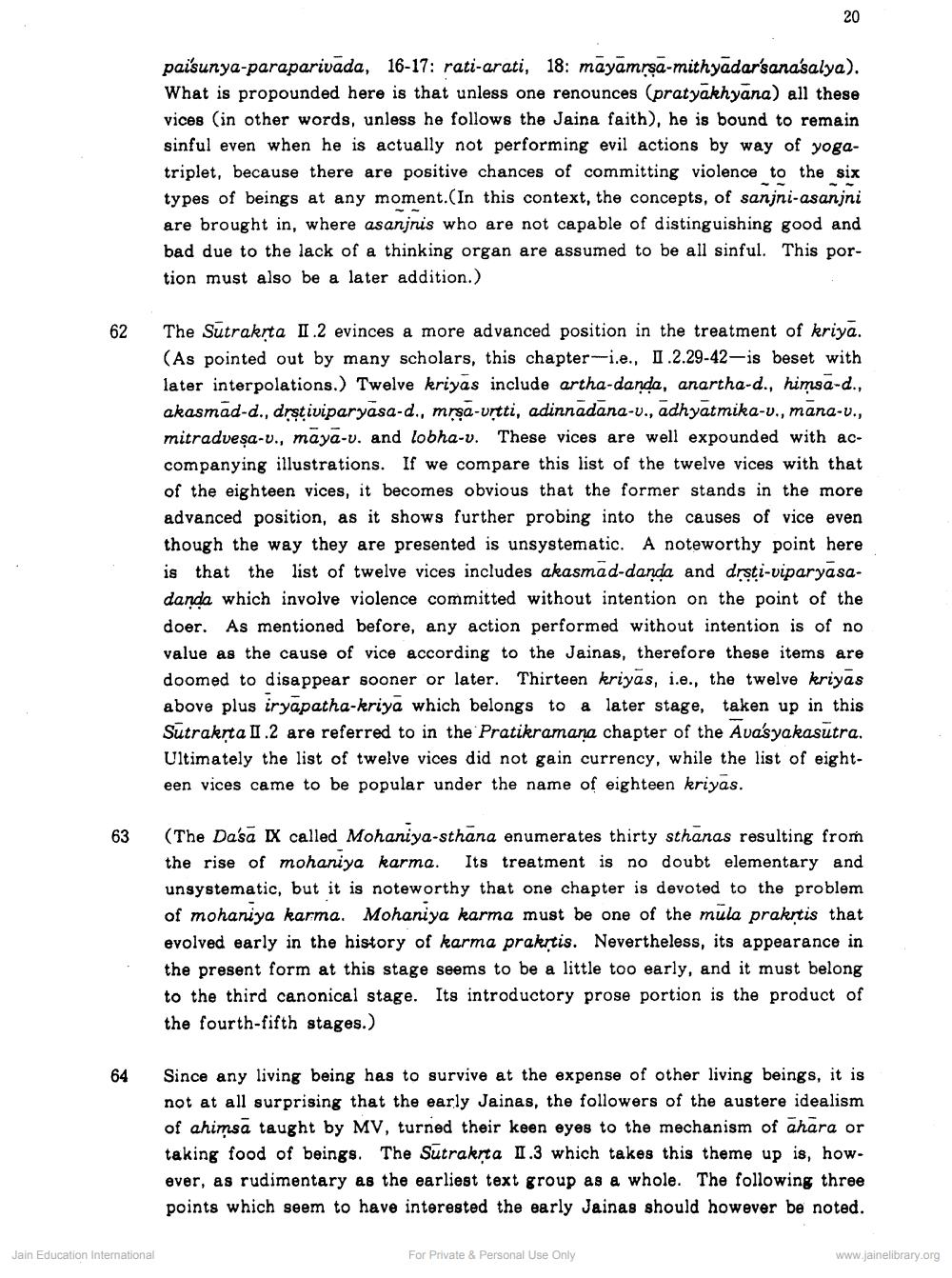________________
paisunya-paraparivada, 16-17: rati-arati, 18: mayamrsa-mithyadarsana'salya). What is propounded here is that unless one renounces (pratyakhyana) all these vices (in other words, unless he follows the Jaina faith), he is bound to remain sinful even when he is actually not performing evil actions by way of yogatriplet, because there are positive chances of committing violence to the six types of beings at any moment.(In this context, the concepts, of sanjni-asanjni are brought in, where asanjnis who are not capable of distinguishing good and bad due to the lack of a thinking organ are assumed to be all sinful. This portion must also be a later addition.)
The Sutrakrta 1.2 evinces a more advanced position in the treatment of kriya. (As pointed out by many scholars, this chapter-i.e., 1.2.29-42-is beset with later interpolations.) Twelve kriyas include artha-danda, anartha-d., himsa-d., akasmad-d., drștiviparyasa-d., mrşa-urtti, adinnadana-v., adhyatmika-v., mana-v., mitradveşa-v., māyā-v. and lobha-v. These vices are well expounded with accompanying illustrations. If we compare this list of the twelve vices with that of the eighteen vices, it becomes obvious that the former stands in the more advanced position, as it shows further probing into the causes of vice even though the way they are presented is unsystematic. A noteworthy point here is that the list of twelve vices includes akasmad-danda and drsti-viparyasadanda which involve violence committed without intention on the point of the doer. As mentioned before, any action performed without intention is of no value as the cause of vice according to the Jainas, therefore these items are doomed to disappear sooner or later. Thirteen kriyas, i.e., the twelve kriyas above plus iryapatha-kriya which belongs to a later stage, taken up in this Sutrakrta 1.2 are referred to in the Pratikramana chapter of the Ava'syakasutra. Ultimately the list of twelve vices did not gain currency, while the list of eighteen vices came to be popular under the name of eighteen kriyas.
63
(The Dasa IX called Mohaniya-sthana enumerates thirty sthanas resulting from the rise of mohaniya karma. Its treatment is no doubt elementary and unsystematic, but it is noteworthy that one chapter is devoted to the problem of mohaniya karma. Mohaniya karma must be one of the mula prakrtis that evolved early in the history of karma prakrtis. Nevertheless, its appearance in the present form at this stage seems to be a little too early, and it must belong to the third canonical stage. Its introductory prose portion is the product of the fourth-fifth stages.)
Since any living being has to survive at the expense of other living beings, it is not at all surprising that the early Jainas, the followers of the austere idealism of chimsā taught by MV, turned their keen eyes to the mechanism of ahara or taking food of beings. The Sutrakrta II.3 which takes this theme up is, however, as rudimentary as the earliest text group as a whole. The following three points which seem to have interested the early Jainas should however be noted.
Jain Education International
For Private & Personal Use Only
www.jainelibrary.org




